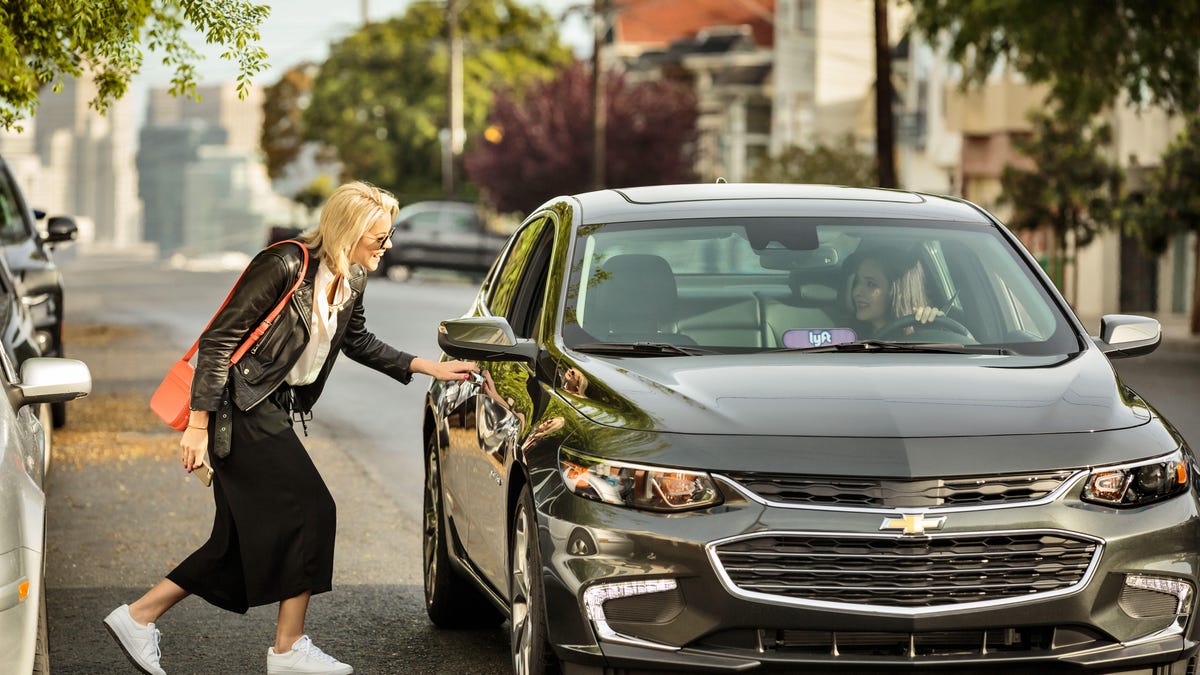Uber, Lyft to test passenger pick-up zones in San Francisco
To cut down on double-parking and blocked bike lanes and crosswalks, the city's mayor asks the ride-hailing companies to designate specific loading areas.

San Francisco aims to cut down on ride-hailing drivers double-parking when picking up and dropping off passengers.
As ride-hailing services like Uber and Lyft have grown in popularity, so has a common complaint: congestion.
Cyclists complain bike lanes are blocked as drivers double-park to pick-up and drop-off passengers. Pedestrians say crosswalks are often obstructed. And other drivers say they get stuck behind ride-hailing cars pulled over to load up passengers.
San Francisco has asked Uber and Lyft to work with it to deal with these issues. Mayor Ed Lee publicly announced a pilot program on Tuesday that will designate specific loading zones for drivers of the ride-hailing companies, according to the San Francisco Examiner.
"The best way to solve any problem is to bring people to the table and build consensus," Lee said in a emailed statement. "By working together, we have created a data-driven pilot program that will address the public safety and traffic implications of ride-sharing vehicles double parking, blocking bike lanes and impeding traffic. This is just the beginning of our effort to make our streets safer for pedestrians and bicyclists and more efficient for all those on the road."
Lee initially sent letters to Uber and Lyft in May addressing his concerns around ride-hailing and public safety. Since then, the city and the companies have continued conversations on the matter.
"Lyft looks forward to partnering with the Mayor's office to see how we can most effectively and efficiently use curb space in the city," said a Lyft spokeswoman. "We have been participating in meetings with the pilot's stakeholder group since May and appreciate the Mayor's leadership on this important issue."
An Uber spokesman echoed Lyft's sentiments and said, "We've made substantial progress to meet our shared goals to reduce congestion and improve public safety."
The way the program would work is both companies would use what's called "geofencing" software in the app to tell passengers and drivers where to meet. Both Uber and Lyft already use the software in certain scenarios, like pick-ups at airports, train stations and sports arenas.
San Francisco is the first major city to announce plans to work with the companies to cut down on ride-hailing congestion. Both Uber and Lyft already use geofencing at the city's King Caltrain station and the California Pacific Medical Center campus.
Once the loading zone pilot gets underway, Lee requested that the companies share data with the city, such as anonymized trip details. He said this is to ensure compliance from the companies and to evaluate the success of the program. It's still unclear when the pilot will begin and where and how many loading zones will be designated.
First published Nov. 8, 2:04 p.m. PT.
Update, Nov. 9 at 2:36 p.m.: Adds comment from Mayor Ed Lee.
The Smartest Stuff: Innovators are thinking up new ways to make you, and the things around you, smarter.
CNET en Español: Get all your tech news and reviews in Spanish.

